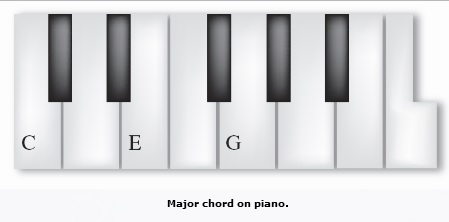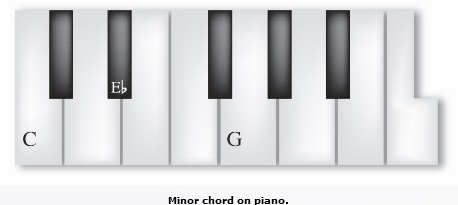Major/Minor
A chord has three or more pitches that sound as a unit, either simultaneously or in sequence (that is, arpeggio). Major and minor chords use nearly the same intervals, namely a root, third, and fifth. The distinction between them is a half-step difference between the pitch referred to as the “third.”
To better understand this concept, it is helpful to have access to a piano. If on the piano you play a root pitch, say, C, the major third is four half-steps above this pitch (E). (Ascending from one piano key to the next constitutes a half-step.) If you label the root pitch as the 1 key, then the E would be labeled the 5 key, ascending on both the black and white keys of the piano. If you continue to the fifth scale-degree (G), then you ascend three more half-steps to the piano key that would be labeled 8, again counting both black and white keys. These three pitches together, C–E–G, create a major chord. Following the same procedure as above to find the root and fifth, the only pitch that changes to create a minor chord is the third, which is a half-step lower (E-flat), or would be labeled 4 if you count piano keys starting with 1 as the root.

